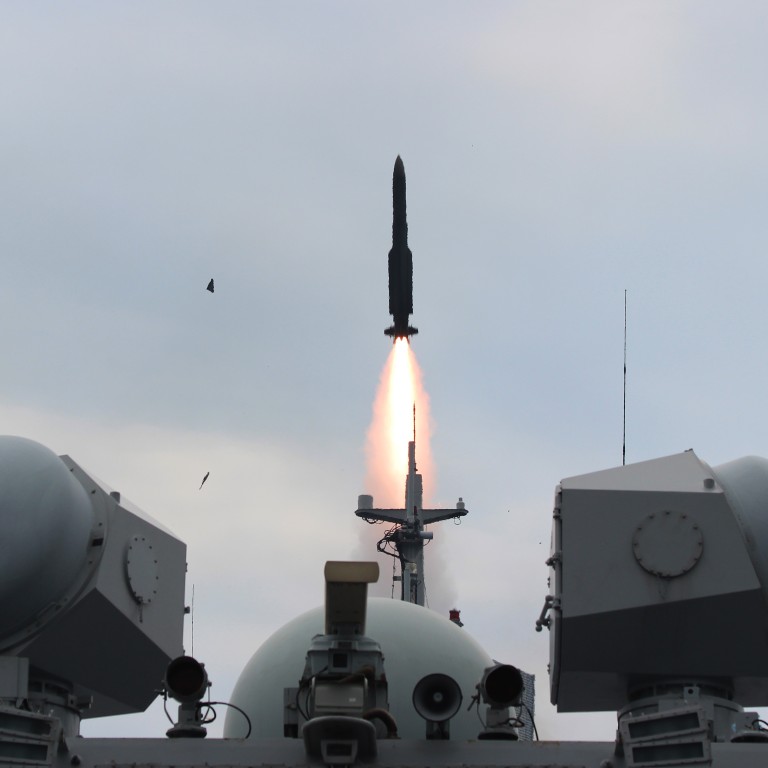
Chinese navy sends Washington a message by patrolling near largest US state Alaska
With all eyes on Beijing's parade, manoeuvres on other side of world may be of equal significance
The PLA Navy may have had a low-key presence during Beijing's military parade, but its manoeuvres elsewhere still had an international audience - particularly at the US Pentagon.
Shortly before the parade, five PLA ships were spotted making a rare visit to the Bering Sea off Alaska, in a move military observers say was aimed at demonstrating the navy's reach and ability to operate near the US coast and Arctic Ocean.
The vessels were seen sailing towards some Alaskan atolls during a visit to the region by US President Barack Obama and by Friday had already started their return journey, US naval chief Admiral Jonathan Greenert told Reuters.
The flotilla included three combat ships, a replenishment vessel and an amphibious landing ship.
The Pentagon said the ships were in international waters and did not pose a threat.
China's defence ministry said the ships had been taking part in a routine drill joining military exercises with Russian forces off Vladivostok, about 3,000km to the south of the Bering Sea, in late August.
"This is a routine arrangement as part of annual plans, and is not aimed at any set country or goal," it said.
US State Department spokesman Mark Toner said it was the first time the US had observed Chinese navy ships in the Bering Sea.
"We certainly respect the freedom of all nations to operate military vessels in international waters in accordance with international law," he said.
The ships' presence in the sea was designed to send a message, according to Su Guan-chiun, a Taipei-based military commentator. He said it was a PLA tradition to choose symbolic return routes after military drills - such as the international waters off Japan's Hokkaido.
"By sailing the Bering Sea, the PLA Navy is [showing] the US [it] is capable of reaching these waters," Su said.
Su had been perplexed when reports said replenishment vessels had attended the drill with Russia. "It meant the navy was planning more operations. Now it all makes sense - they planned to sail the Bering Sea before returning home," he said.
"By sailing the Bering Sea, the PLA Navy is [showing] the US [it] is capable of reaching these waters"
Li Jie, a retired senior navy colonel, said it was normal for the PLA Navy to explore seas it had not sailed before, given its blue-water ambitions and attention to the Arctic shipping route.
"The Chinese navy should no longer limit itself in offshore areas," he said. "It needs to sail the Arctic Ocean to learn more about this region, its hydrological characteristics … to ensure safety of navigation there," Li said.
China unveiled plans to extend its reach into open seas in a defence white paper in May. The paper also highlighted the importance of protecting the country's overseas interests.
In his speech during the parade, President Xi Jinping pledged to downsize the military.
Retired major general Xu Guangyu , an adviser to the China Arms Control and Disarmament Association, said the initiative would target land forces and savings would be spent on the navy. "It's a must for China to strengthen the navy with its national interests expanding overseas and more nationals living outside the country … especially in the wake of [Xi's] 'One Belt, One Road' initiative," he said.
